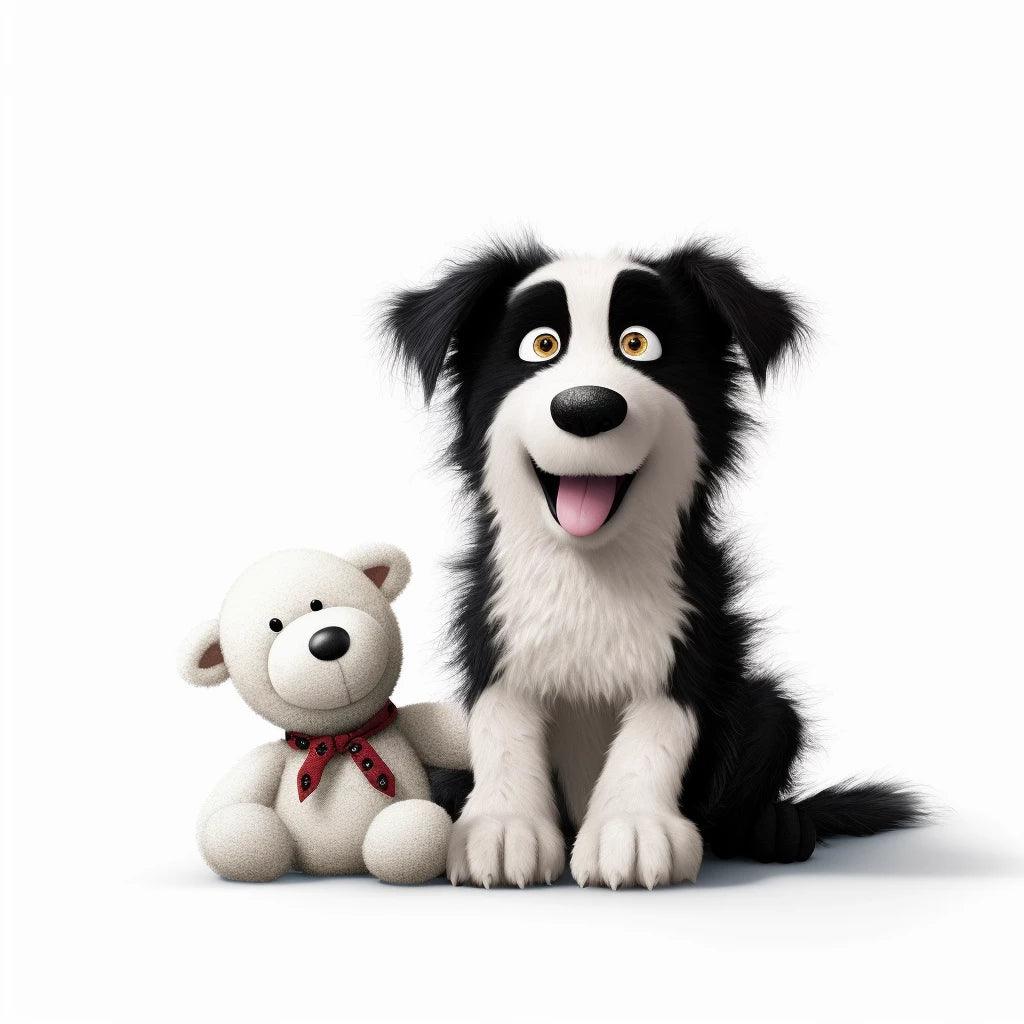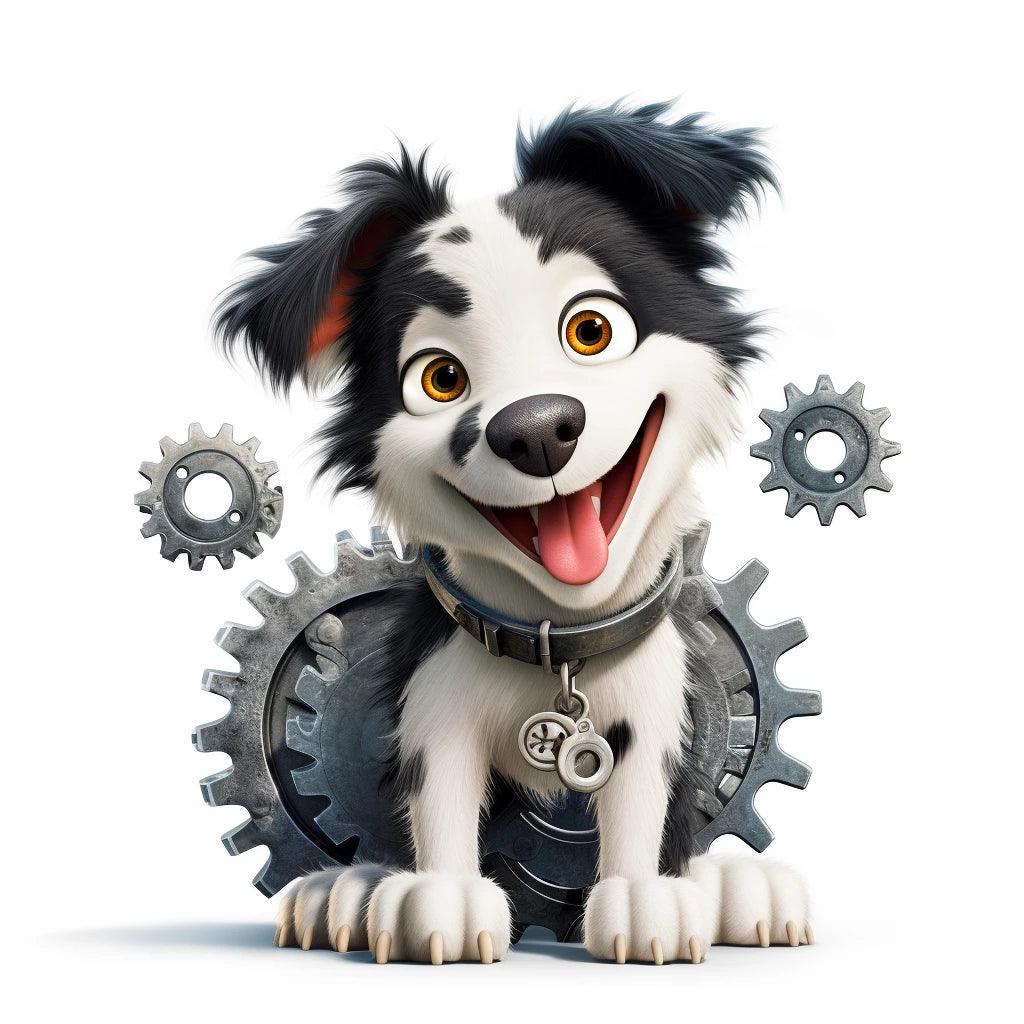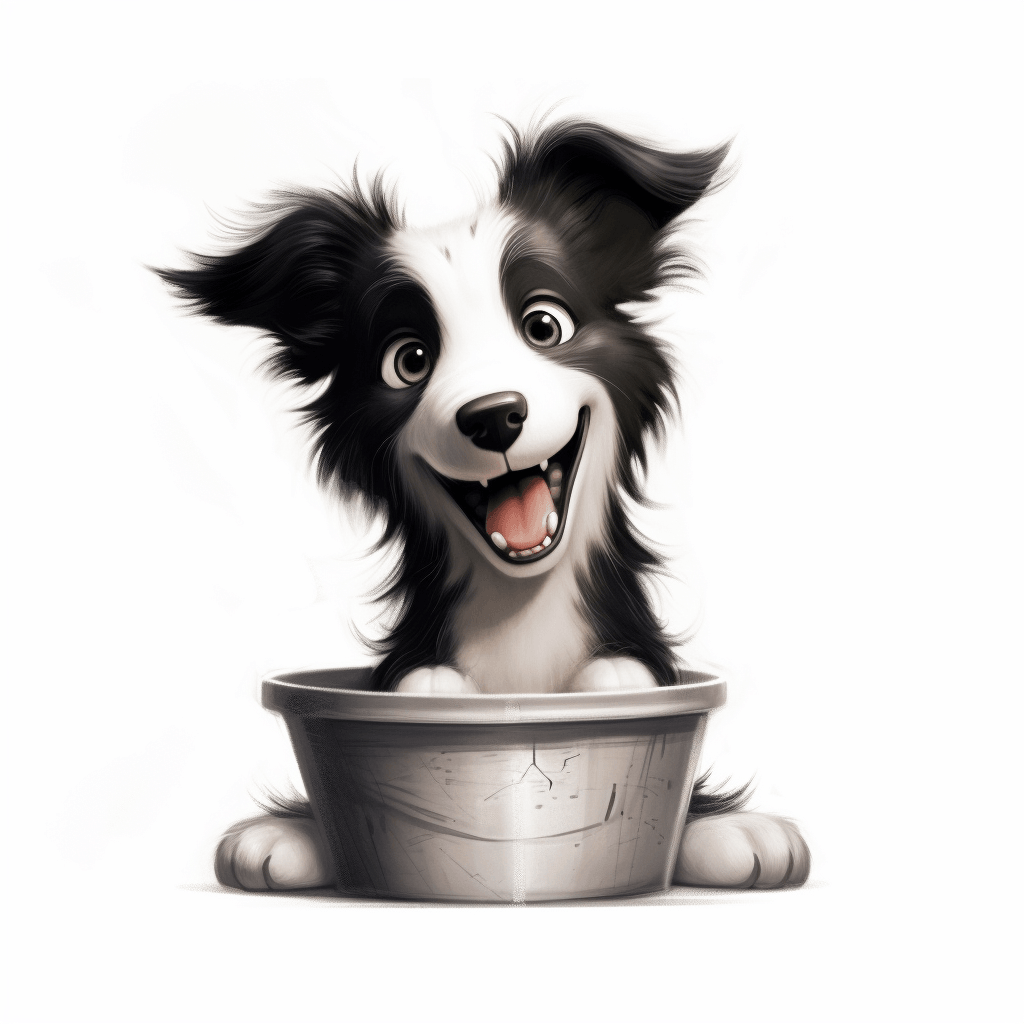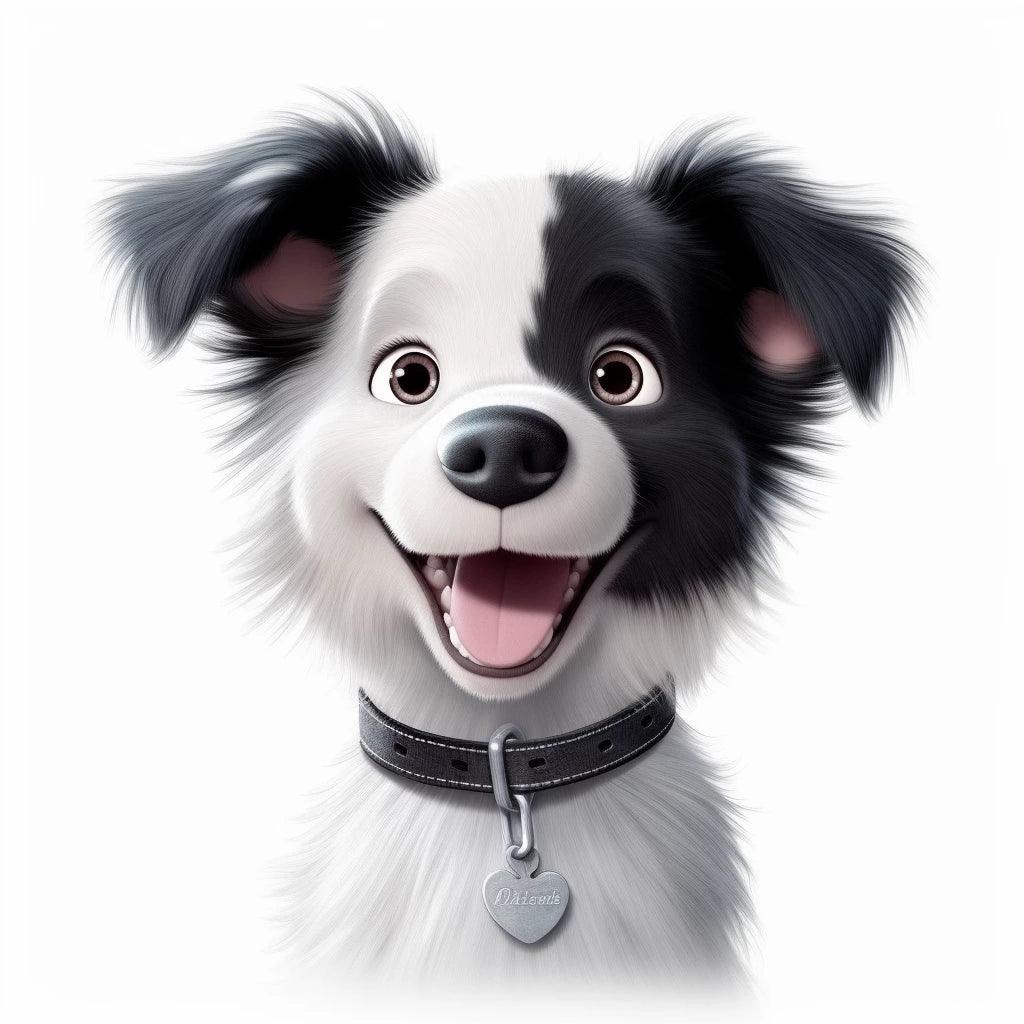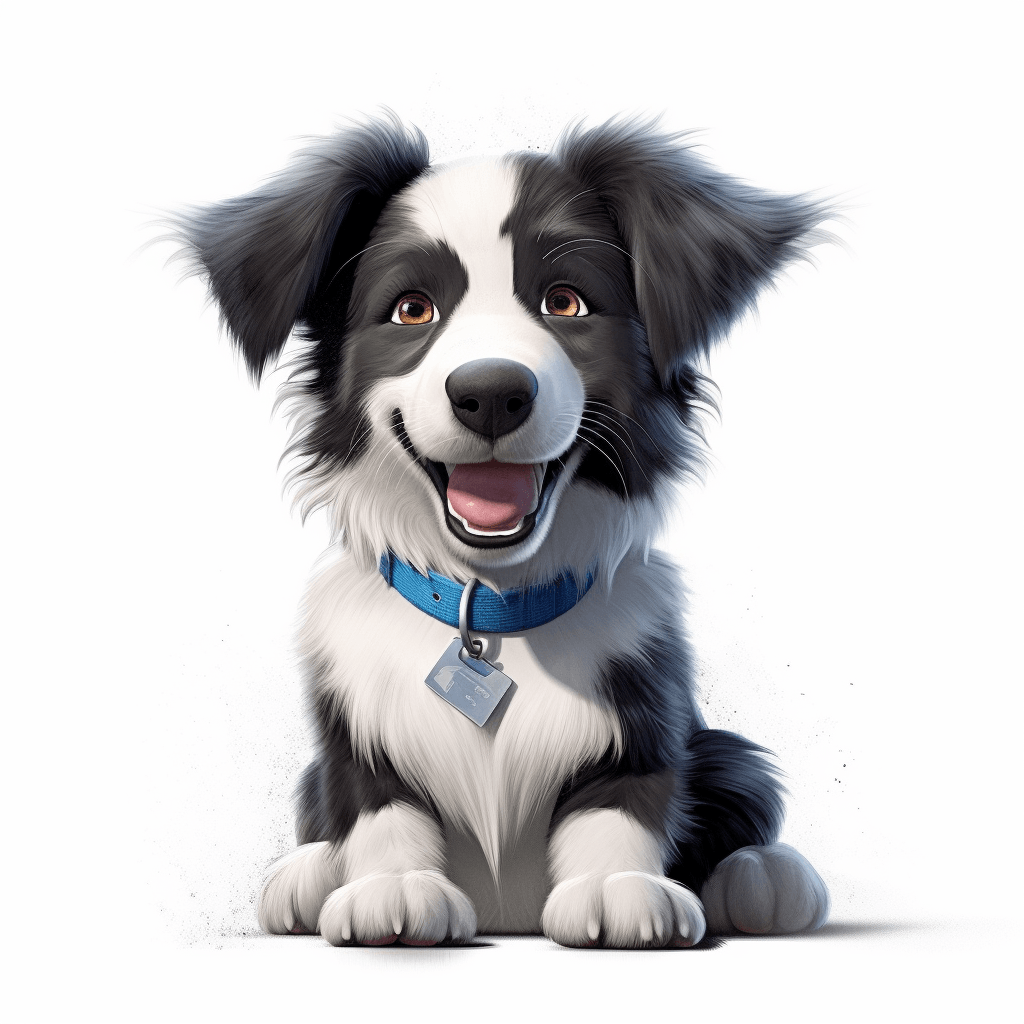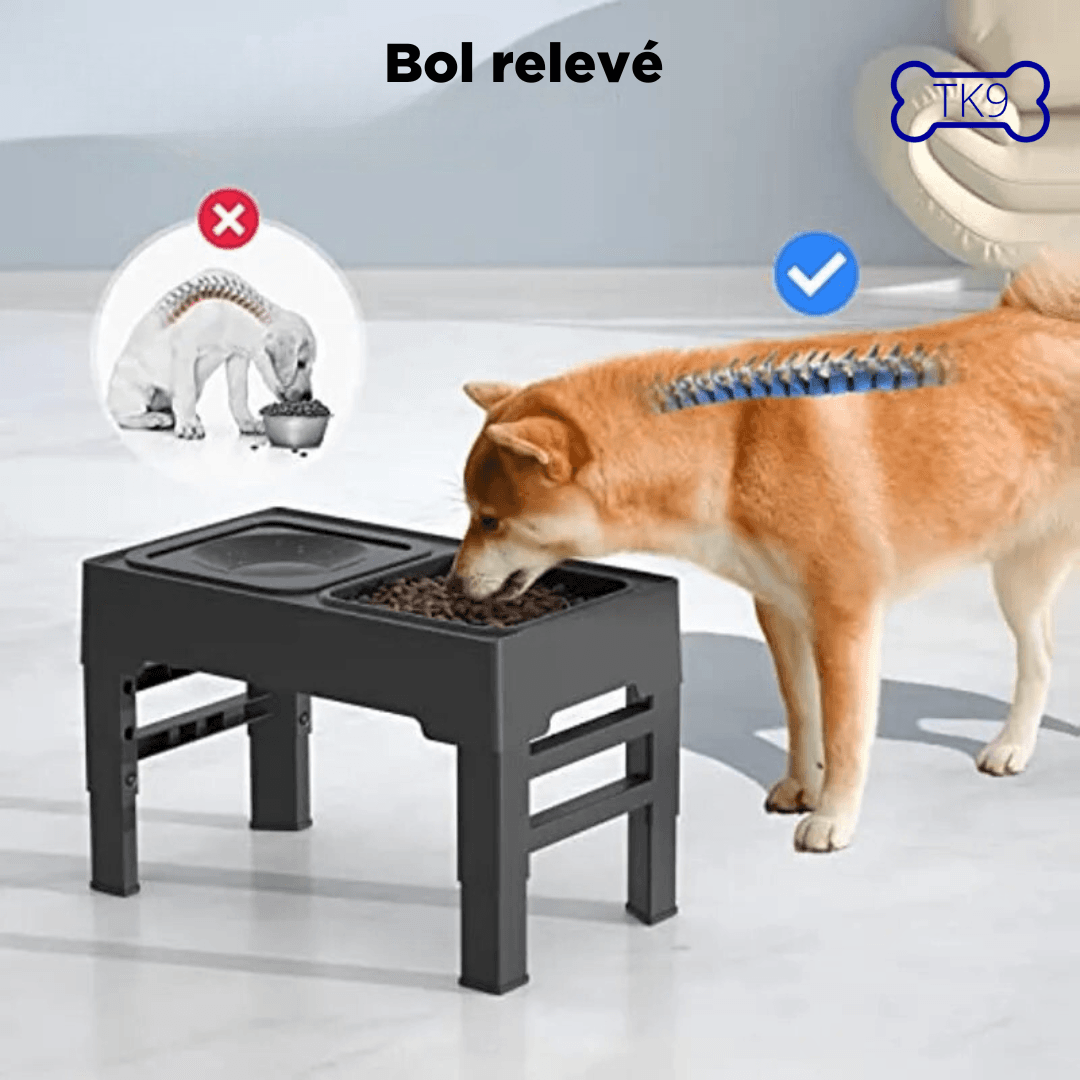
Why put the bowl up high?
Share
The position of your dog's bowl might seem like a minor detail in the vast world of dog care. However, the location and height at which food and water are offered can have a significant impact on the health and well-being of your four-legged friend. Raising your dog's bowl has several notable benefits that deserve attention. Let's explore why this practice is increasingly recommended by veterinarians and animal behavior specialists.
Improved Posture and Comfort
When a dog eats off the floor, they have to bend over, which can lead to an uncomfortable posture, especially for large breeds or older dogs with arthritis or joint problems. A raised bowl allows the dog to eat in a more natural position, better aligning their neck, shoulders and hips, and reducing strain on their body.
Facilitation of Digestion
Raising the bowl helps promote better digestion. By eating in a more upright position, gravity can help facilitate the movement of food through the digestive system. This can reduce the risk of acid reflux and bloating, common problems in dogs who eat quickly or ingest air while eating.
Prevention of Health Problems
Elevated food bowls can help prevent several health problems, including stomach dilatation, a potentially life-threatening condition where the stomach expands and twists. Although raising the bowl does not guarantee prevention of this condition, it can decrease the risks associated with rapid ingestion and poor posture while feeding.
Improved Hygiene and Cleanliness
A bowl placed higher up is less likely to be contaminated by dust, debris and insects on the ground. This helps keep your dog's eating area clean and hygienic, reducing the risk of ingesting unwanted substances that could affect their health.
Mental Stimulation and Psychological Comfort
For some dogs, eating at a more comfortable height can reduce anxiety and stress during mealtimes. This can be especially beneficial for nervous dogs or those who have negative experiences associated with eating. An improved eating position can also provide mild mental stimulation because it's different from the ordinary.
Conclusion
The decision to raise your dog's bowl should not be taken lightly. It is important to consider your dog's size, age, existing health conditions, and consult your veterinarian to determine the optimal height. A wise choice can significantly improve your dog's quality of life, promoting better health, more efficient digestion, and increased overall comfort during meals.
FAQs on Using Overhead Dog Bowls
Q1: For which types of dogs is the height bowl particularly recommended?
Answer: Elevated bowls are particularly beneficial for large dogs, breeds prone to digestive problems such as stomach upset, as well as older dogs or those with joint or mobility problems. This makes it easier to access their food and water without them having to bend over uncomfortably.
Q2: How do I determine the ideal height for my dog's bowl?
Answer: The ideal height for a bowl is generally at or slightly below your dog's elbow joint. This allows your dog to eat and drink in a natural, comfortable position, reducing strain on their neck and spine.
Q3: Can using a raised bowl really help prevent digestive problems?
Answer: Yes, using an elevated bowl can help reduce the risk of digestive issues such as stomach dilatation-twisting, by allowing your dog to eat in a more natural position that aids digestion. It can also help reduce air ingestion during meals, which is often a contributing factor to bloating.
Q4: Are overhead bowls safe for puppies to use?
Answer: For puppies, it is important to choose a height-adjustable bowl or use a bowl at the appropriate height for their current size. This ensures that they can access their food and water comfortably without risking injury.
Q5: Do all dog breeds benefit from a raised bowl?
Answer: Although elevated bowls can provide benefits for many dogs, they are not necessary for all breeds, especially smaller breeds who may not experience the same strain or digestion issues. Consult your veterinarian for advice tailored to your dog's breed and individual needs.
Q6: Can we use overhead bowls for water as well as food?
Answer: Absolutely, providing water in an elevated bowl can offer the same benefits of comfort and ease of access as food, especially for dogs who have difficulty bending over.
Q7: How to clean and maintain overhead bowls?
Answer: High bowls can be cleaned in the same way as standard bowls. However, it is important to regularly clean both the bowl itself and the support, to avoid the accumulation of bacteria and ensure optimal hygiene.
Q8: Where can I find a good quality height bowl?
Answer: at Tao-K9 of course! Tao-K9 raised bowl


